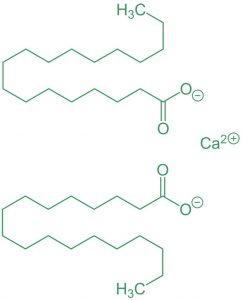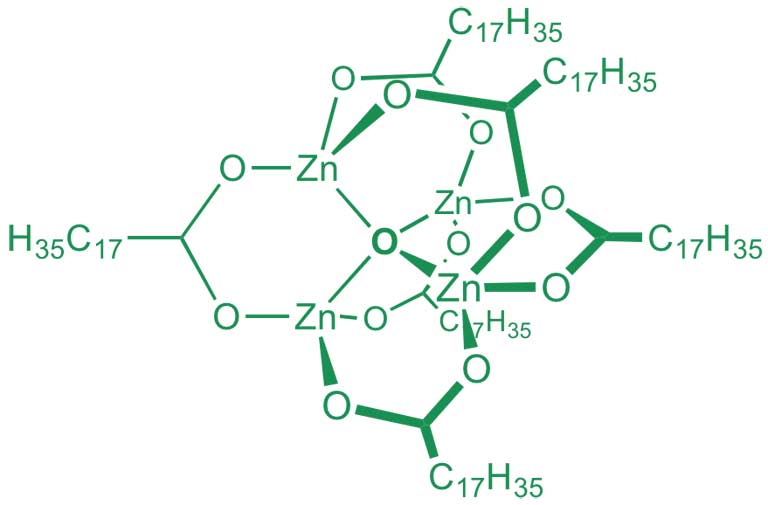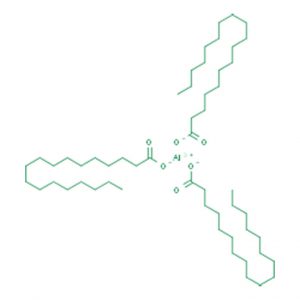
Calcium Stearate
Chemical Name: Calcium Octadecanoate
CAS No. 1592-23-0
Calcium stearate is recognized as physiologically safe, and is insoluble in most solvents. Compared to waxes, it has a relatively high softening point, and, consequently, do not become greasy at higher temperatures. Calcium stearate is primarily used as an acid scavenger, release agent and lubricant in the plastics industry, for waterproofing in construction, and as an anti-caking additive in pharmaceuticals and cosmetics. In addition, we do have special thermostable calcium stearate products designed to withstand exceptionally high temperatures.

Zinc Stearate
Chemical Name: Zinc Octadecanoate
CAS No. 557-05-1
In comparison to other metallic stearates, zinc stearate has a low melting point (120°C) – meaning it spreads very evenly when heated. Zinc stearate is mainly used in the plastics and rubber industries, where it is used as a lubricant and release or powdering agent. Zinc stearate functions as an acid scavenger and processing aid in certain polyolefin applications. In addition, it improves the abrasiveness of sandpapers, and acts as a matting agent in paints and coatings. In construction, powdered zinc stearate is utilized as hydrophobic agents for plasters. Zinc stearates are available in various product forms – as powder or low-dust products – and as derivatives from animal or vegetable raw materials.

Magnesium Stearate
Chemical name: Magnesium Octadecanoate
CAS No. 557-04-0
Magnesium stearate is recognized as physiologically safe. Therefore, it is used by the cosmetics and pharmaceutical industry to improve the free-flowing properties, and is added as anti-caking agents to powders. One of the principle uses of magnesium stearate is as a tablet excipient in pharmaceutical dosage forms. Thermostable magnesium stearate is used as a lubricant and release agent for the processing of thermosets and thermoplastics.

Aluminium Stearate
CAS No. 65324-35-8
There are multiple types of aluminum stearates, generally classified as aluminum mono-, di-, and tri-stearate. They vary in terms of physical properties such as melting point, free fatty acids, and particularly the gelling properties. Oils with a low viscosity are best thickened by aluminum di- and tri-stearate, whilst very viscous oils from stiffer gel when combined with aluminum mono- or di-stearates. All aluminum stearates are highly hydrophobic, and feature outstanding transparency and excellent adhesion to metal surfaces. Due to their water repellency, aluminum di- and tri-stearate are used as hydrophobic agents in the building industry.
